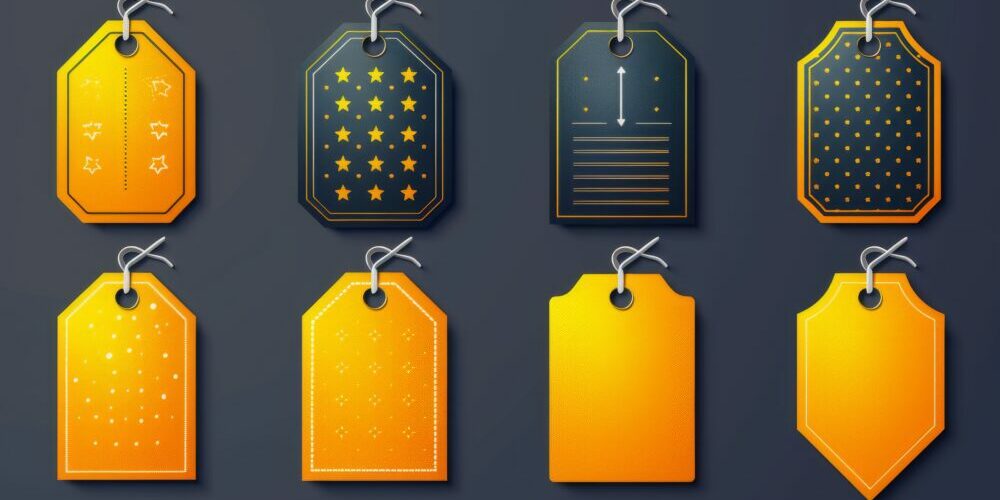When Less Speaks More: The Tale of a Single Tag
Have you ever pondered the power held within a tiny price tag? Imagine walking through a bustling marketplace, your gaze flitting from one item to the next. Amidst the visual cacophony, one tag catches your eye. It’s not the largest, nor the most flamboyant, but something about its design whispers secrets of value and quality. This moment encapsulates the essence of effective price tagging—a silent communicator that can elevate a brand from the ordinary to the extraordinary.
Effective price tagging goes beyond mere numbers on a piece of paper. It’s an art form that combines aesthetics, psychology, and strategy to attract and engage the discerning consumer. In a world where first impressions are crucial, a well-designed price tag can be the difference between a product that languishes on the shelf and one that finds its way into the hearts and homes of customers.
But what makes a price tag truly stand out? Is it the material, the font, the color, or perhaps the way it’s attached to the product? The answer is all of the above and more. From the tactile appeal of jacron labels to the understated elegance of satin tags, the choice of material sends a message about the product’s quality and brand ethos. Moreover, the font and color scheme must not only capture attention but also reflect the brand’s identity and values.
The Symphony of Elements: Crafting the Perfect Tag
It’s not just about what’s written on the tag, but how the message is delivered. Imagine the tag as a small canvas, where every element from the type of string used for attachment to the precision of the print, plays a part in the symphony. A nylon string might hint at durability, suitable for outdoor gear, while a delicate ribbon suggests luxury, perfect for high-end apparel. The magic lies in the details, the subtle cues that whisper to the consumer, “This is for you.”
In this dance of elements, the role of technology cannot be understated. Advances in printing techniques have opened new horizons for creativity and precision. High-definition digital printing allows for richer colors and sharper details, making even the smallest text legible and impactful. This technological leap means that the tags are not just carriers of information but are also mini-masterpieces, capable of conveying the essence of the brand at a glance.
Moreover, the choice between digital and traditional printing methods can reflect the brand’s commitment to sustainability. For instance, eco-friendly inks and recycled materials speak volumes to environmentally conscious consumers, adding another layer of connection between the product and its potential owner. Every choice in the creation of a price tag is a chance to tell a story, to invite the customer into a world shaped by the brand’s vision and values.
Engaging the Senses: The Final Touch
In a marketplace where consumers are bombarded with choices, the final battleground for attention is often the sensory experience. The feel of a cotton tag against the fingertips, the sheen of a satin ribbon catching the light, or the rustic charm of a wooden label can evoke emotions and memories, making the product stand out in a sea of sameness. It’s these tactile and visual cues that can turn a casual glance into a meaningful engagement, leading to the ultimate goal: the decision to purchase.
But the journey doesn’t end at the checkout. A well-crafted price tag, much like a carefully chosen business card, can continue to speak for the brand long after the purchase. It serves as a reminder of the experience, a token that carries the essence of the brand’s identity. This extended dialogue between the brand and the consumer is what transforms a simple transaction into the beginning of a relationship.
In the art of effective price tagging, every detail counts. From the choice of materials to the nuances of design, it’s a delicate balance of form and function, aesthetics and ethics. In a world where every product has a story, the price tag is the prologue, inviting the consumer to step into the narrative. So, the question remains: What story will your tags tell?






